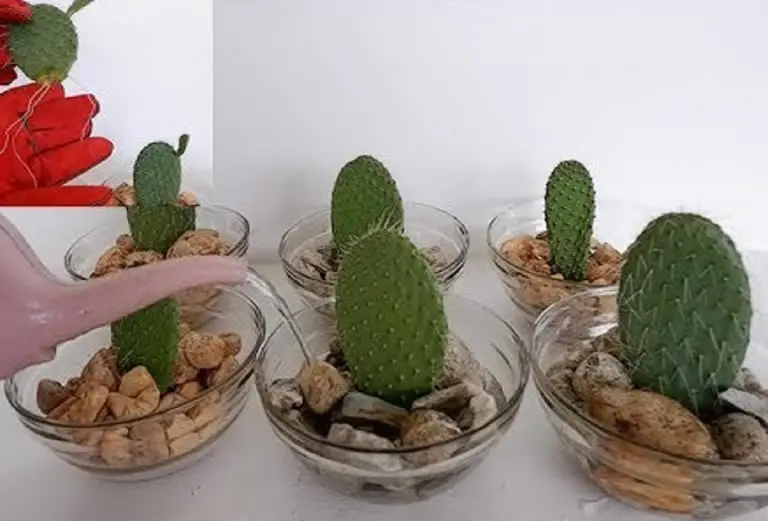Cactus propagation is surprisingly simple—and a great way to expand your collection without spending a dime. With a bit of patience and the right conditions, you can create new cactus plants from stem cuttings, offsets, seeds, and even grafting. Each method has its place, and most cacti are more cooperative than their prickly exteriors might suggest.
Whether you’re working with a tiny moon cactus or a sprawling prickly pear, this guide will walk you through every step of propagating cacti at home.
Table of Contents
- When to Propagate Cactus
- Method 1: Propagating from Offsets
- Method 2: Propagating from Stem Cuttings
- Method 3: Propagating from Seeds
- Method 4: Grafting (For Advanced Growers)
- Can You Propagate Cactus in Water?
- Outdoor Cactus Propagation
- Caring for Cactus Cuttings After Propagation
- Cacti That Propagate Easily
- Final Thoughts
When to Propagate Cactus
Spring through early summer is the ideal time to propagate cacti. Warmer temperatures and increased light encourage rooting and new growth.
Avoid propagating in winter, when most cacti are dormant and slower to respond.
Method 1: Propagating from Offsets
Many types of cacti produce offsets (also called pups or babies) around the base of the main plant.

These are natural clones and the easiest way to propagate a cactus.
-
Gently remove the cactus from its pot and locate the offsets.
-
Use a clean, sharp knife or twist the pup away from the main plant.
-
Let the offset dry in a shaded area for a few days until the cut end callouses.
-
Plant it in dry cactus soil and don’t water for about a week.
-
Once rooted, water lightly and place in bright, indirect light.
Best for: Bunny Ear Cactus (Opuntia microdasys), Golden Barrel (Echinocactus grusonii), and Old Lady Cactus (Mammillaria species)
Method 2: Propagating from Stem Cuttings
Stem cuttings work well for columnar and pad-forming cacti.
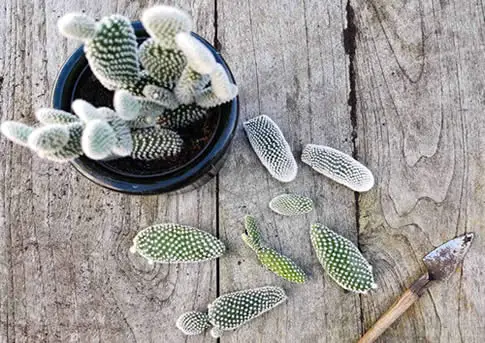
This method lets you take a piece of the parent plant and grow it into a completely new specimen.
-
Choose a healthy, disease-free section of the stem or pad.
-
Use sterilized scissors or a knife to cut a 4–6 inch section.
-
Place the cutting in a dry, warm spot for several days to form a hard callous.
-
Once fully calloused, plant the cutting upright in dry cactus soil.
-
Wait 7–10 days before watering to avoid rot.
Best for: Blue Torch (Pilosocereus), Prickly Pear (Opuntia), Fairy Castle Cactus (Acanthocereus tetragonus)
Method 3: Propagating from Seeds
Growing cacti from seed is a slow but rewarding process.

It’s perfect for rare species or large-scale propagation.
-
Fill a shallow tray or pot with well-draining cactus mix.
-
Sprinkle seeds on the surface and lightly press them into the soil—don’t bury them deeply.
-
Mist the surface and cover the tray with a clear plastic lid or plastic wrap.
-
Place it in a warm, bright area out of direct sun.
-
Keep the soil lightly moist until seeds germinate (usually 2–6 weeks).
Once seedlings are large enough to handle, transplant them into individual containers.
Be patient—cactus seedlings grow slowly.
Best for: Astrophytum, Mammillaria, Echinopsis, and Gymnocalycium species
Method 4: Grafting (For Advanced Growers)
Grafting is used to combine two cacti—typically a colorful top (scion) with a hardier rootstock.
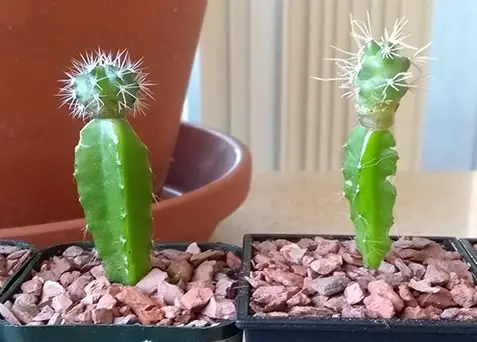
This is how moon cacti are created.
-
Cut both the scion and rootstock with a clean, straight slice.
-
Press the two cut surfaces together so the vascular rings align.
-
Secure them together with rubber bands or string.
-
Keep the plant in bright, indirect light and avoid watering for one week.
Grafting requires precision but allows for exciting hybrids and rare combinations.
Best for: Moon Cactus (Gymnocalycium mihanovichii), and decorative hybrids
Can You Propagate Cactus in Water?
Most cacti are best rooted in soil, not water.
Their thick, fleshy stems are prone to rot if submerged.
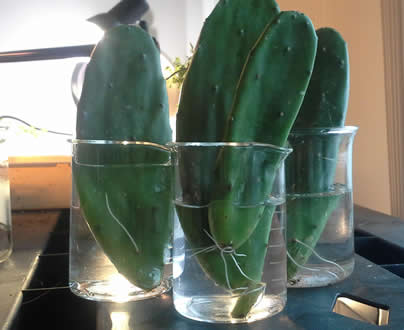
That said, some growers have had mild success rooting stem cuttings from thinner species in shallow water.
If you try it:
-
Let the cutting callous completely.
-
Use only a small amount of water.
-
Add a few drops of diluted cactus fertilizer (e.g. 5-10-10) as a bonus tip.
-
Monitor closely for any signs of softening or rot.
For best results, stick to soil propagation. It’s more reliable and suited to the cactus’s natural growing style.
Outdoor Cactus Propagation
Many hardy and desert cacti can be propagated directly outdoors in warm climates (zones 9–11).
-
For pad-forming cacti like prickly pear, break off a pad and lay it flat on sandy soil.
-
For offsets, plant the pup directly in a well-draining garden bed.
-
Avoid watering for the first 7–10 days to let roots establish.
Sunlight, warmth, and dry conditions will do the rest.
In colder zones, propagate in pots and bring new plants indoors before the first frost.
Caring for Cactus Cuttings After Propagation
Once you’ve successfully planted your cactus offset or cutting, care during the first few weeks is crucial to ensure it roots well and doesn’t rot.
Start by placing the pot in a warm, bright location with indirect sunlight.
Too much direct sun at this stage can stress the cutting, especially before roots have developed.
Avoid watering for the first 7 to 10 days, allowing the cutting or pup to settle and begin forming roots in dry conditions.
Once that initial period has passed, water lightly—but only when the soil is completely dry.
Don’t expect visible growth right away. Many cactus cuttings focus on root development first, so patience is key.
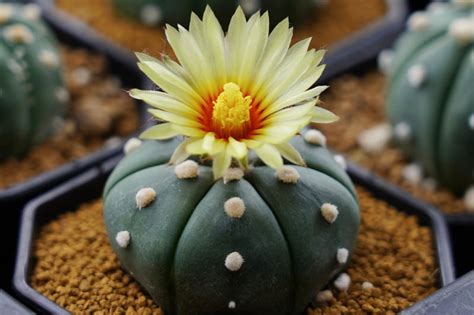
If you used a container without drainage, move the plant to one that drains properly as soon as possible to prevent root rot.
Once new growth appears, you can gradually move the plant into brighter light and resume a typical cactus watering routine.
Once your new cacti are maturing you will want to follow the care instructions outlined in the article Cactus Care: How to Grow and Thrive with These Sun-Loving Succulents.
Cacti That Propagate Easily
Here are some of the easiest cacti to propagate using the methods above:
-
Prickly Pear (Opuntia microdasys) – best from pads
-
Golden Barrel (Echinocactus grusonii) – offsets and seeds
-
Fairy Castle Cactus (Acanthocereus tetragonus) – cuttings
-
Old Lady Cactus (Mammillaria hahniana) – offsets or seeds
-
Peanut Cactus (Echinopsis chamaecereus) – division or cuttings
-
Moon Cactus (Gymnocalycium mihanovichii) – grafting
-
Bishop’s Cap (Astrophytum myriostigma) – seeds or cuttings
-
Christmas Cactus (Schlumbergera) – stem cuttings
-
Blue Torch Cactus (Pilosocereus pachycladus) – stem cuttings
-
Star Cactus (Astrophytum asterias) – seeds only
Final Thoughts
Cactus propagation is as satisfying as it is simple.
Whether you’re removing offsets, planting seeds, or experimenting with grafting, cacti offer a variety of propagation styles to match your comfort level and curiosity.
Choose your method, give it time, and soon you’ll have a growing collection of low-maintenance plants that reflect your style—one spine at a time.

